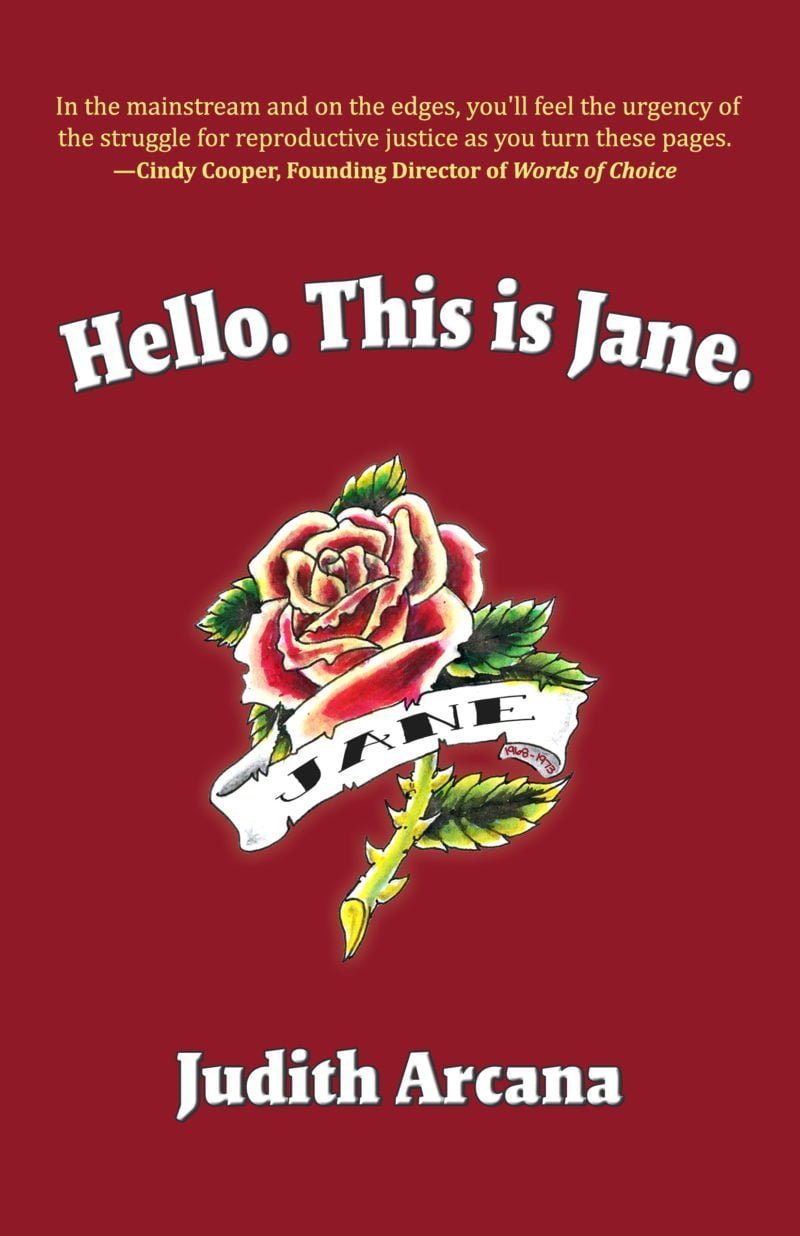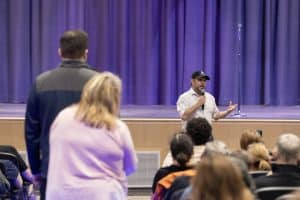In 1965 Heather Booth, a college student in Chicago assisted her friend’s sister to obtain a safe abortion. She called on surgeon T. R. M. Howard, who had been a leader in the civil rights movement, to perform these procedures. Although abortion had been criminalized in America since the late 1800s when the patriarchal American Medical Association insisted that doctors appropriate womens’ “wisdom medicine,” women were still seeking abortions. Because abortions were illegal and women could be imprisoned for performing them, the inexpensive, safe womens’ knowledge to terminate pregnancy began to disappear. Doctors refused to perform abortions unless the pregnant mother was facing imminent death. So, for the better part of a century, most women seeking abortions did so at great risk to their health, life, or future fertility.
Booth was soon “known” amongst women as the go-to person to take care of crisis pregnancies. When the demand became too much for her alone, she reached out to the Chicago Women’s Liberation Union to find others who would help her with the case load. Thus “birthed” was a covert network, the Abortion Counseling Services of Women’s Liberation – informally known as the Jane Collective.
Initially 10 women were recruited to help. During the time of Jane’s service, 20 women became part of this movement, and thus the Jane Collective began in 1969 and served the Hyde Park community in Chicago until 1973 when Roe v Wade passed guaranteeing the constitutional right to abortion. Two anonymous doctors were the main abortion providers. This collective was a model and an inspiration for other underground networks around the country to provide abortions.
In 1971, Judith Arcana, author of “Hello. This is Jane,” joined and served in the collective. She was one of seven women who had been arrested in a police raid in May 1972 and charged with eleven counts of abortion and conspiracy to commit abortion. Judith’s book is an anthology of stories– real and apocryphal – about the experiences these women had in counseling and providing abortions for their patients. In looking at supplemental historical information about this collective, I found some interesting items. Although mostly word of mouth, the collective did post flyers in the community which read “pregnant? don’t want to be? call Jane” (with a phone number.) The two anonymous abortion providers “Mike” and “Nick” were known for safety and efficacy and so received referrals from the Jane counselors. Patients who were served by the Janes had overall a safe inexpensive procedure at a time when it was against the law. However, after it was discovered that “Nick” lied about having a medical license, the Janes did not want to refer their patients to him. During this network meeting discussion one of the Janes suggested “…if he’s not a doctor and he can do it, that means we can do it. That means anyone who’s got brains and skills and training can do it…that’s what it means.” “Nick” (his other pseudonym in the book was “Jake”) ultimately agreed to train some of these counselors to perform the procedures themselves. The Janes subsequently reduced the fee down from $500 to $100 for their patients. For unwanted pregnancies’ alternative to the Jane’s abortion network services, there was either carry a pregnancy to term or find an expensive abortion provider who was more interested in profit than patient safety and good medical outcomes. Over that period the Janes were in service in Chicago, and from 1969-1972, 11,000 were performed in private apartments. No deaths were reported post-abortion, although there had been some ER admissions and one patient had a hysterectomy. An obstetrician stated that outcomes were on par with safe legal abortions performed in New York at the time.
Who were the Janes? They were white, middle-class women who were part of the second wave of feminism – the Women’s Liberation Movement. Some were former patients of the service. The collective served working class patients at the time. As one Jane put it “rich women have always been able to get abortions and they always will. They pay their own doctor thousands of dollars and call it therapeutic, or they fly to Puerto Rico, Japan, England. Do rich women come through the service? Our women never have chunks of money available fast: they’ve got no margin… .”
Because the counselors were white some patients of color were uncomfortable and let the collective know this. The collective did bring on one Black woman into their service. Interestingly, the Janes were able to stay free and underground for several years because police officers in the precinct where they operated looked the other way. Some brought their wives or girlfriends to the service for abortions. One policewoman was known to have used their services. A theory about how and why the collective got busted is that a patient’s religious sister was so upset about the abortion that she informed on the collective to police in a different precinct of the city. After the 7 Janes were arrested, they were released on bail and their lawyer delayed the trial because the SCOTUS decision upholding the right to abortion in was imminent. Upon release of that decision in 1973 the charges were dropped. These arrest and bond circumstances highlight impacts of race, class, and privilege in the criminal justice system.
Arcana’s anthology of stories also includes quips about a tattoo parlor, the owner/artist, his customers, his relationship with his mother and his relationship with one of the Janes and her child. Tattoo art and creativity speaks to the idea of freedom and bodily autonomy and is a beautifully woven metaphor for individual freedom as is abortion.
One story, which is brave to tell in the context of abortion justice, is an imagined conversation between a woman and her aborted fetus, perhaps a girl since the woman has a son. It’s not an emotional or intense conversation, just ordinary and matter of fact conversation that the fetus no longer wants to be called “strawberry,” but wants a name of its own – perhaps non-binary since at 5-6 weeks termination there is no sex determination.
Another story setting is an ecumenical meeting of male clergy from diverse faiths trying to figure out how to counsel their flock and support reproductive choice.
Finally, most compelling is an imagined conference between young women and some of the Janes. This is during the time of “Roverturn” and the women are trying to get their own “Jane collective” started. “Hello. This is Jane” was published in 2019. I read this after the actual overturning of Roe v Wade in 2022. The imagined conversations have now become real, have now become a playbook for what the next steps are – namely, to be focused, vigilant, persistent, honest in messaging, and to save people’s lives.
Form your coalition of supporters or activists, don’t go it alone. Find roles for each person in the service. This resembles the old underground railroad system designed to free enslaved persons prior to the Civil War.
Consider the internet both a blessing and a curse. The blessing is the outreach for those in crisis; the curse is our present-day surveillance state. Find the happy medium between reachable and secure. Make sure tech experts are part of the coalition. Become familiar with multiple methods for ending pregnancy. At-home pregnancy tests for early detection and medicine to prevent embryonic implantation are medical tools that weren’t available pre-Roe. Find ways to stockpile these medicines. Research other natural methods. Become familiar with old fashioned ways of communicating, too, if it becomes too risky on the internet. Take ownership of the language when dealing with the media and legislators.
The anti-choice movement should be called forced birth proponents because even though adoption is a choice, it still requires a pregnant person to go through unwanted labor and delivery. Always keep in mind that no matter how sentimental the language is from the other side about “protecting life,” their goal is about controlling and restricting people capable of pregnancy, especially those who are poor, Black or Brown, and denying them freedom and pleasure.
Prioritize marginalized groups. Never push anyone in any direction. It’s about their choice and their empowerment. Abortions will always happen whether sanctioned or not, whether safe or not, whether affordable or not. So it’s not about life. If it were about life, we would have comprehensive universal health care and education safety nets that promote growing families. We would outlaw the death penalty. We would have sane gun laws. We would defund the military industrial complex. Abortion is health care and health care is a human right.





